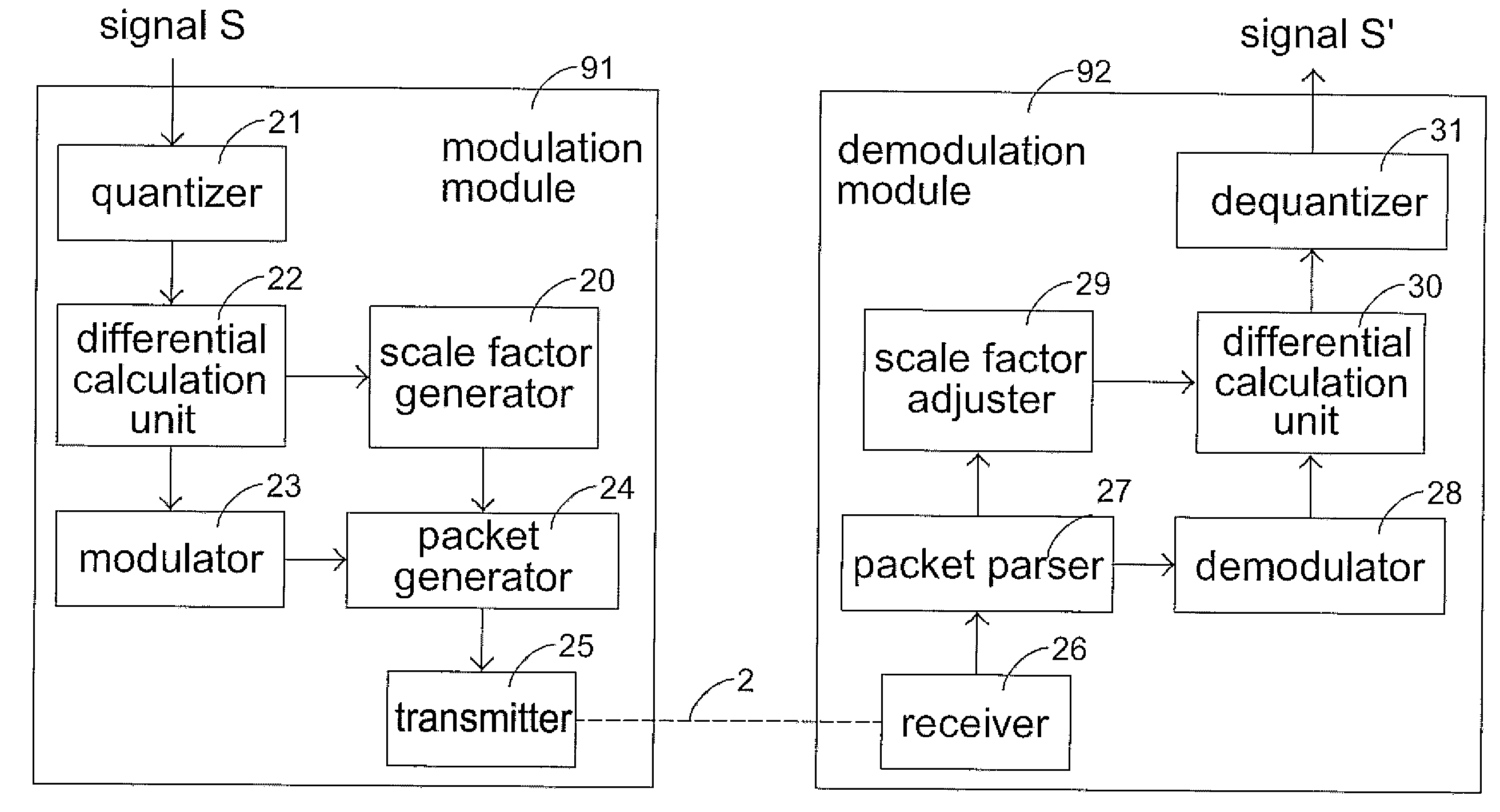Adaptive differential pulse code modulation/demodulation system and method
- Summary
- Abstract
- Description
- Claims
- Application Information
AI Technical Summary
Problems solved by technology
Method used
Image
Examples
Embodiment Construction
[0017]FIG. 1(a) is a schematic diagram of a sampling calculation developed from an ADPCM method in accordance with the present disclosure. Referring to FIG. 1(a), p(n) represents an uncompressed digital sampled value by sampling an audio signal waveform S with a fixed sampling frequency, and x(n) represents a digital sampled value processed by differential calculation and data compression, where x(0)=p0, x(1)=(p1−p0) / sf, x(2)=(p2−p1) / sf, and so on; wherein, p0 is called a base PCM value, and sf is called a scale factor.
[0018]In order to reduce hardware cost of a data receiving end, an adaptive differential pulse-code modulation-demodulation method is provided according to one embodiment of the present disclosure. In Step S11, a raw analog audio input signal is received and converted into a data packet, which comprises a plurality of ADPCM digital data, and a field for storing an initial value and a scale factor associated with the plurality of ADPCM digital data. In Step S12, the da...
PUM
 Login to view more
Login to view more Abstract
Description
Claims
Application Information
 Login to view more
Login to view more - R&D Engineer
- R&D Manager
- IP Professional
- Industry Leading Data Capabilities
- Powerful AI technology
- Patent DNA Extraction
Browse by: Latest US Patents, China's latest patents, Technical Efficacy Thesaurus, Application Domain, Technology Topic.
© 2024 PatSnap. All rights reserved.Legal|Privacy policy|Modern Slavery Act Transparency Statement|Sitemap



